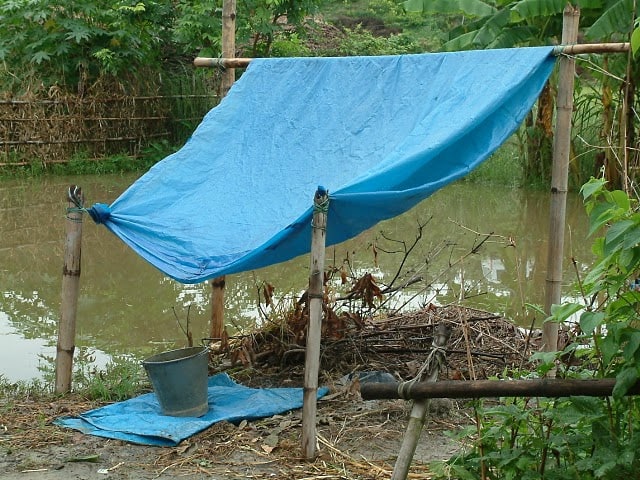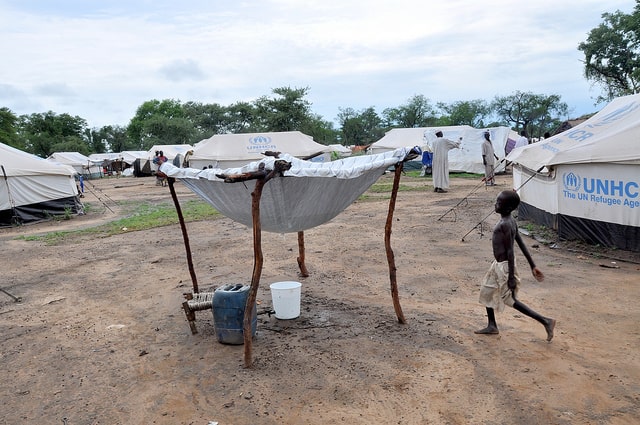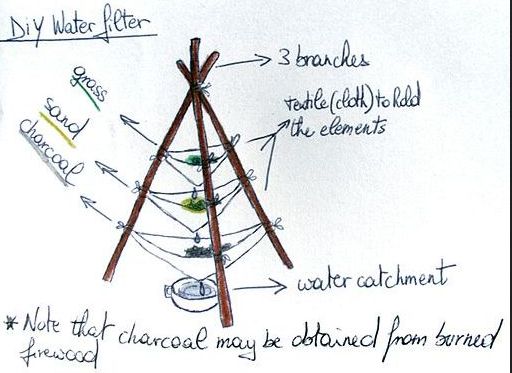You can go weeks without food, but your body can only survive about 3 days without water. Before those 3 days are up, you will already be delirious and weak – not exactly the ideal state of being for survival!
For these reasons, knowing how to obtain water is one of the essential survival skills you need to know.
Why You Need to Know How to Harvest Rain
According to the EPA, the average American family uses about 300 gallons of water per day. That is a massive amount of water, and there is no way you could stockpile that much water (unless you are lucky enough to have vast amounts of space).
Of course, you don’t really need 100 gallons of water per person to survive. You need about ½ gallon per day for drinking and another 1-2 gallons per day for cooking and hygiene.
But going from 100 to 2 gallons per day will be a significant change. You’ll probably end up using more than you realize, and soon your precious water stockpile will be gone.
So you will need to have a way to replenish your water supply. And that is where rainwater harvesting comes in.
Putting All Your Buckets and Bottles in the Rain Isn’t Going to Cut It!
Think you can just put your water bottles outside when it rains to replenish your stockpile? Think again!
Moderate rainfall is considered 0.10 to 0.30 inches per hour. So a typical rainfall lasting 3-4 hours will produce just about 1 inch of rain.
One inch of rain over a square foot (about the size of a bucket) will give you just about 0.6 gallons of water. That’s not very much water!
Now expand the collection area to 50 square feet. Now you’ve got 30 gallons of water!
What’s the message here? You’ve got to increase surface area to collect rainwater effectively!
Home Rainwater Harvesting System
To harvest rainwater, you need a large flat surface to collect the rainwater and funnel it into storage tanks. The simplest way to do this at home is to use your existing rooftop and gutters.
Setting up a home rainwater collection system isn’t as simple as putting some barrels under your gutters. If you’ve got a steel roof, then you could do this.
It won’t work very well with asphalt shingle roofs, though, because too much debris gets caught up in the gutters. Just a few leaves in your rainwater will cause it to get moldy and full of bacteria very quickly.
This wouldn’t be such a big deal in true survival situations because you could filter and boil the dirty water (you know how to filter water for survival, right?).
But why not take some preemptive steps, so your rainwater is cleaner?
There are two ways you can clean your rainwater before it gets into your collection barrels:
- First Flush Diverter: This system will channel away the initial rainwater. The idea is that this first rainwater will flush out all the leaves and debris on your rooftop, so the rain collected afterward is clean. It works by using a pipe with a cap at the end. When the pipe is full, a flapper shuts it off, so any additional rainwater goes into the collection system.
- Rainwater Harvesting System Filters: There are many different filtration systems you can set up right in your rainwater collection system. This article covers the different rainwater filter types, including pot, basket, cascade, vortex, and DIY filters.
Read our in-depth guide to rainwater harvesting
Plastic Tarp Rainwater Collection

What is one of the most critical items in your survival pack?
A plastic tarp.
Not only can you use it to make a survival shelter, but it is fantastic for collecting rainwater in the wilderness.
The most novice way of collecting rainwater with a plastic tarp is to tie up the ends so it has a bowl shape. Then you manually pour the water into your collection buckets.
There are some limitations to this method; you won’t be able to collect a lot of water unless you continuously go out into the rain to fill up your buckets.
I would use a more advanced setup to collect rainwater in a survival situation. I like how the above rainwater collection system is set up because the tarp serves multiple purposes at once.
You could even use the tarp to make your survival shelter and protect yourself from the same rain you are collecting!
Here is another cool rainwater collection setup. You can learn a lot from refugee camps.

Read our guide to the best survival tarpaulin.
Any other waterproof item will also work as a rainwater collection device. Some ideas include:
- Plastic bags
- Your rain jacket
- An upside-down umbrella
Wring Out Rain-Soaked Clothes
Caught in a wilderness survival situation and don’t have a tarp? You can still collect rainwater. Hang up some of your thicker, absorbent clothing in the rain. Once it is saturated, you can wring out the water into your pots, bottles, and whatever else you have to store it.
Holes in the Ground Lined with Plastic Bags
This option is less than ideal but would work in a pinch.
You need to dig a hole in the ground and line it with a regular plastic bag. The plastic is important, or the water will get absorbed into the ground.
The main problem with this system is that a lot of dirt runoff will also come into the hole.
Prevent this by making your water collection holes on an elevated surface.
Once the rain stops, cover the hole with something to prevent the collected water from evaporating.
Tips for Drinking RainWater

Despite what people say, rainwater isn’t 100% clean. The air is polluted, and your rainwater probably picked up some debris during the collection process.
Any smart survivalist will know to filter rainwater before drinking it. I like the Sawyer Mini and keep it in with my survival gear.
Another issue is that water can fester bacteria and mold when it sits for a long time (I doubt you will be able to completely sterilize your water storage containers in a survival situation!).
If you find yourself without a water filter, then boil the water for at least 15 minutes. That should be long enough to kill off most of the bacteria.
You can also make your own cool water filter out of things you find in nature. It isn’t 100% effective, but it will make drinking water safer.
Are you stockpiling water? How much, and what is your plan if it runs out? Let us know in the comments area.
Harvesting rainwater by Oxfam East Africa (CC BY-NC-SA 2.0) Found on Flickr.
Rain barrel system by Chiot’s Run (CC BY-NC-SA 2.0) Found on Flickr.


